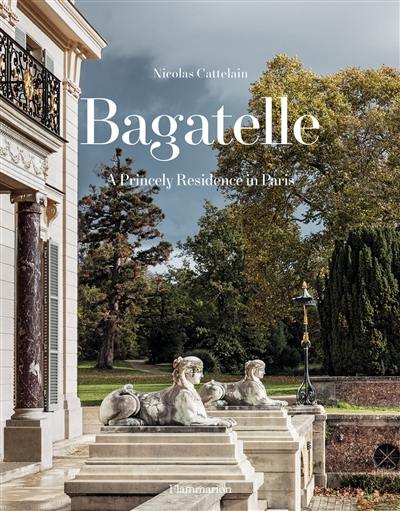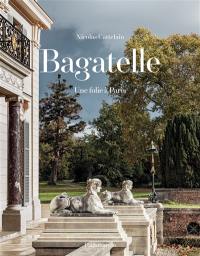
Fiche technique
Format : Relié sous jaquette
Nb de pages : 278 pages
Poids : 2234 g
Dimensions : 25cm X 32cm
ISBN : 978-2-08-024752-0
EAN : 9782080247520
Bagatelle
a princely residence in Paris
Quatrième de couverture
The comte d'Artois-future King Charles X and brother of Louis XVI-made a bet with his sister-in-law, Queen Marie Antoinette, that he could construct a villa in the heart of the Bagatelle gardens in only two months. The "Folly d'Artois" would later be owned by Napoleon, the duc and the duchesse de Berry, and two of the most important art collectors of the nineteenth century-Lord Hertford and Richard Wallace. This book traces the rich history of the Bagatelle pavilion since the beginning of the eighteenth century, celebrating how it has become a model for a certain French way of life and an ideal refuge dedicated to art and pleasures.
In 1775, the comte d'Artois purchased the Bagatelle estate in the Bois de Boulogne on the outskirts of Paris. Two years later he made and won a bet with Marie Antoinette that he could construct a villa there in only two months. The Château de Bagatelle, the pleasure pavilion built by François-Joseph Belanger, was modeled on a neo-Palladian villa and required nine hundred workers and craftsmen to create the building and its precious interiors. Picturesque English gardens were embellished by Thomas Blaikie, with artificial ponds, rivers, and bridges, and ornamented with sculptures evocative of ancient Egypt, Greece, and Rome. The splendors of the pavilion and its gardens have since been admired by prestigious visitors from all over Europe and North America.
Spared by t he French Revolution, Bagatelle became the setting for many important moments in European history : it was occupied, successively, by Napoleon and his son (the King of Rome), the duc and duchesse de Berry, and Richard Seymour-Conway, 4th Marquess of Hertford, who received Napoleon III and Eugénie there. His presumed son, Richard Wallace, then inherited the estate and carried out major restoration work and new construction. Upon his death, he bequeathed part of its fabulous art collection to the British nation, which is now part of the Wallace Collection in London. Bagatelle was purchased by the City of Paris in 1905.
The park with its magnificent rose garden has remained open, but the Château has been closed to the public for more than ten years. The renovation of Bagatelle has now been entrusted to the Fondation Mansart, which is working with a team of specialists to restore the building to its former glory. It will be a new, essential destination for Parisians and visitors from around the world.
This beautifully illustrated volume recounts the fabulous history of Bagatelle and its various owners with spectacular new photography, unpublished archival documents, and an insightful text by the author.






